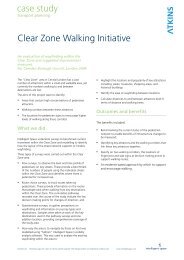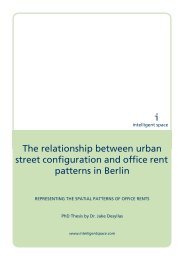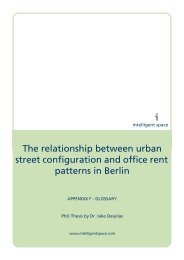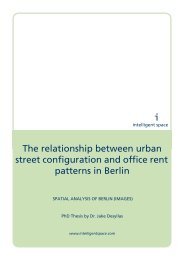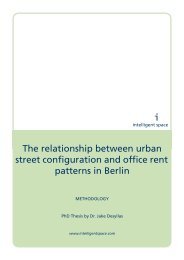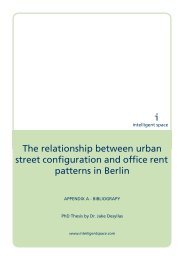Notting Hill Carnival Strategic Review - Intelligent Space
Notting Hill Carnival Strategic Review - Intelligent Space
Notting Hill Carnival Strategic Review - Intelligent Space
Create successful ePaper yourself
Turn your PDF publications into a flip-book with our unique Google optimized e-Paper software.
arenas – the two key stakeholder groups identified by the public safety matrix as being most<br />
in need of support and capacity-building in this regard.<br />
Future Growth: The Need for Continuous Monitoring and Prediction<br />
2.103 The <strong>Carnival</strong> Public Safety Project was successful in providing a greater understanding of<br />
crowd behaviour, build-up and dispersal at the <strong>Notting</strong> <strong>Hill</strong> <strong>Carnival</strong>. Without doubt, it was<br />
because of the Mayor’s strategic review and the Safety Project that some change to the<br />
<strong>Carnival</strong> route was initiated in 2002 and this is a significant step forward from the LSE<br />
workshops that were conducted in 1998. Although a number of changes have now been<br />
introduced into the <strong>Carnival</strong> planning process such as the ‘Gold Task Group’, the <strong>Review</strong><br />
Group were in agreement with the conclusions drawn by the LSE study, namely that “the<br />
stability that seems to arise from the incremental nature of the <strong>Carnival</strong>’s planning process<br />
does present a severe difficulty: a lack of attention to the need to plan in strategic ways for<br />
future developments.” 72 .<br />
2.104 The Safety Project recommended that the <strong>Carnival</strong> stakeholders continue to monitor crowding<br />
at <strong>Carnival</strong> by using quantitative observation surveys in future years and the <strong>Review</strong> Group<br />
were in agreement with this. Given that visitor numbers cannot be controlled at a free and<br />
open event such as the <strong>Notting</strong> <strong>Hill</strong> <strong>Carnival</strong>, monitoring the crowd carefully would be one of<br />
the most useful sources of strategic information for safety planning. If attendance numbers<br />
were to increase, as they have tended to do over the last ten years, monitoring would prepare<br />
stakeholders for the risks associated with such higher numbers. The <strong>Review</strong> Group concluded<br />
that the weakness of the current decision-making and planning process lay in its failure to<br />
plan for the <strong>Carnival</strong>’s growth. In predicting the future growth of the <strong>Carnival</strong>, the Safety<br />
Project, as a preliminary guide, offered three possible growth trends:<br />
a) Growth at the rate experienced in the early 1990’s (high 20 per cent).<br />
b) Growth at the same rate as the increase from 2001 to 2002 for both days of the<br />
<strong>Carnival</strong> (medium, 15 per cent).<br />
c) Growth at the rate of increase from 2001 to 2002 on the <strong>Carnival</strong> Monday (low, 5<br />
per cent).<br />
2.105 Setting aside the possibility of inclement weather and the suspension of major transport<br />
networks, if the <strong>Carnival</strong> were to grow at an annual rate of 5 per cent per year, attendance<br />
would reach one million visitors by 2006. Faster growth could see the <strong>Carnival</strong> becoming<br />
larger than ever before within the next five years.<br />
Figure (16): Growth Potential at 2001-2002 Rate of Increase<br />
72<br />
See footnote 47, p146.<br />
115



